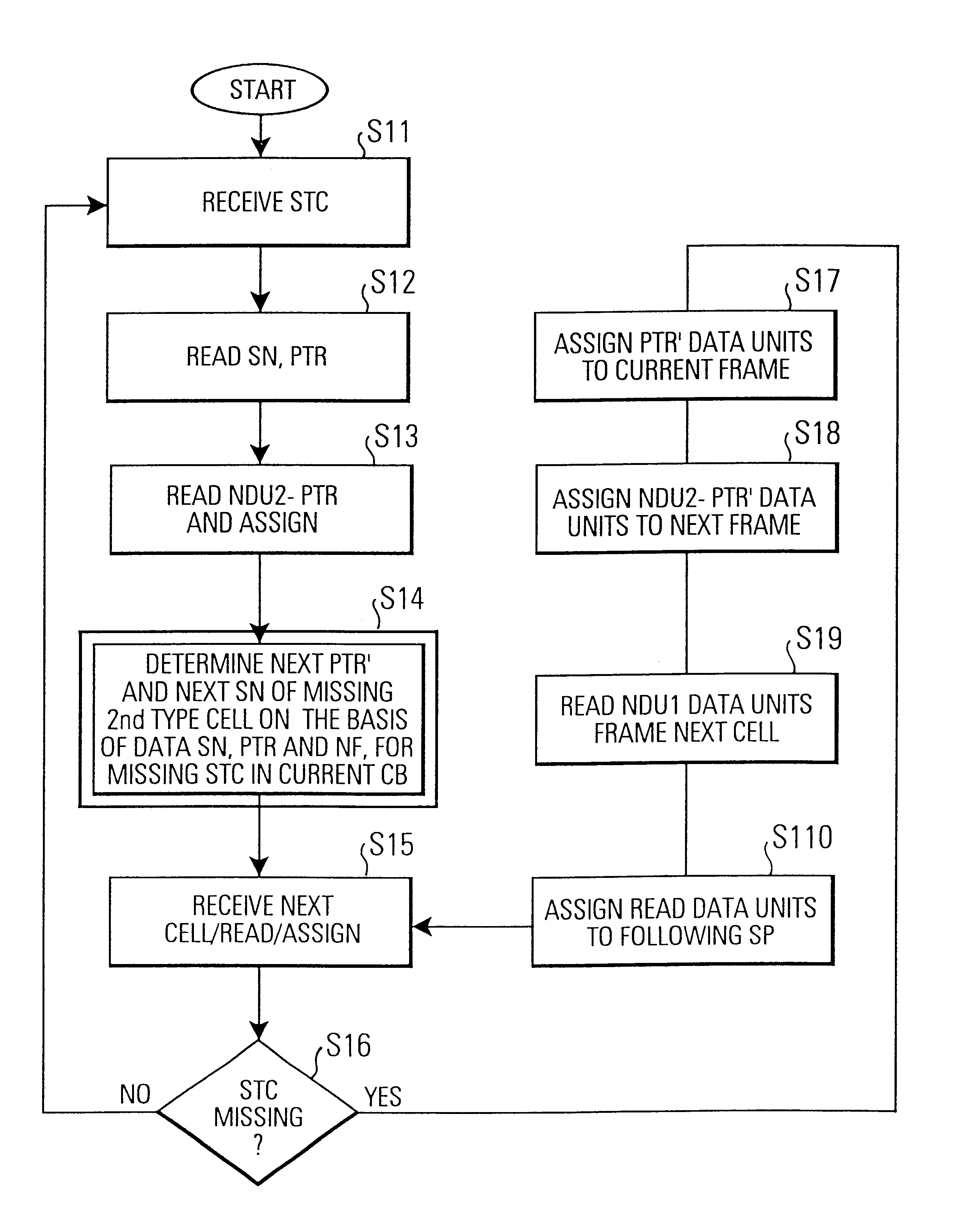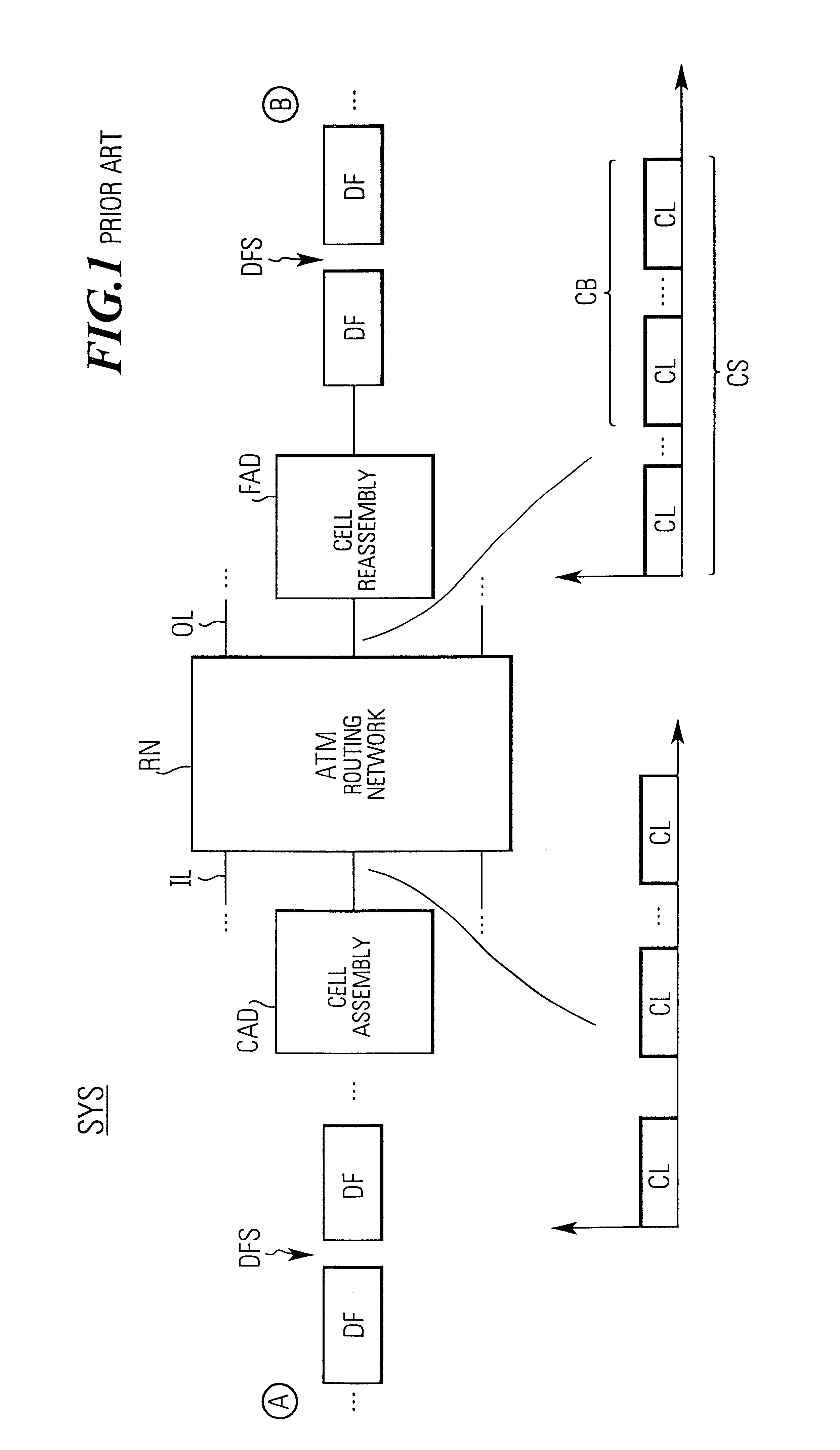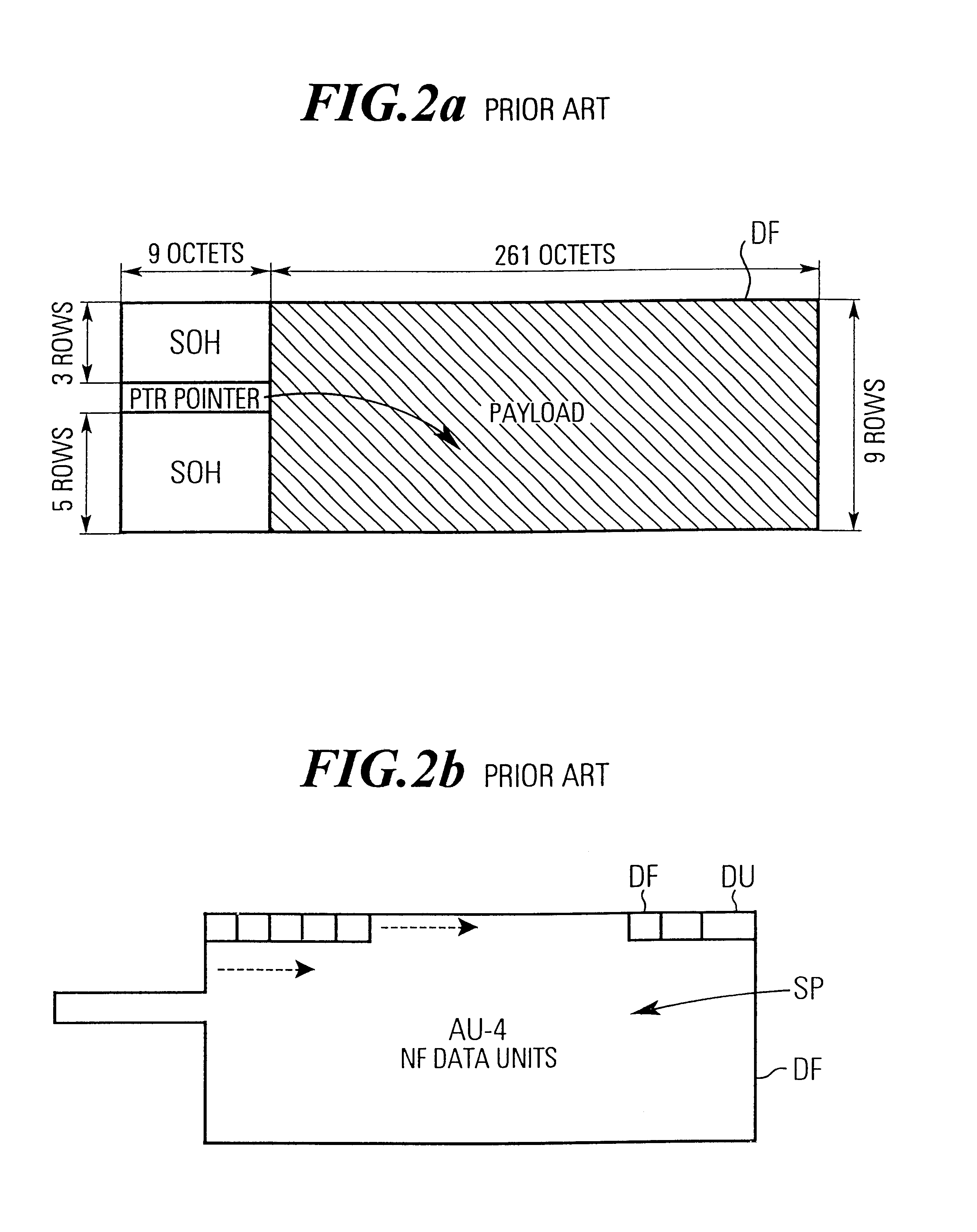Method and device for assigning cell data units to sequential storage positions of data frames using a pointer position estimation
a cell data unit and data frame technology, applied in data switching networks, time-division multiplexing selection, store-and-forward switching systems, etc., can solve the problems of not being able to insert dummy data units ais, all information about the next data frame is lost, and the delimitation of the two frames with respect to their data units also gets los
- Summary
- Abstract
- Description
- Claims
- Application Information
AI Technical Summary
Benefits of technology
Problems solved by technology
Method used
Image
Examples
Embodiment Construction
[0046]Preferably (claim 2), said second type cell further includes in said pointer value field a dummy pointer value indicating that neither a start nor an end of frame occurs in the data block in which the second type cell is included; or a frame&block end pointer value indicating that the end of the frame coincides with the end of the data block; said method further comprising the following steps of providing NC1+1 counters C1, C2, . . . , CSN+N, CNC1+1, one for each sequence number SN; setting said NC1+1 counters CSN+N respectively assigned to the (SN+N)-th sequence number, wherein N=1, 2, . . . , NC1+1 and if (SN+N)>NC1 then N=N−(NC1+1), respectively to counter values CVSN+1=(NF−NDU2+PTR), CVSN+2=CVSN+1−NDU1, . . . ,CVSN+N=CVM−NDU1, wherein M=SN+N−1 if SN+N−1≧0 and M=(SN+N−1)+(NC1+1) if SN+N−12−PTR data units of the second data portion of the second type cell to sequential NDU2−PTR storage positions at the beginning of the current frame; receiving a next cell, reading the sequen...
PUM
 Login to View More
Login to View More Abstract
Description
Claims
Application Information
 Login to View More
Login to View More - R&D
- Intellectual Property
- Life Sciences
- Materials
- Tech Scout
- Unparalleled Data Quality
- Higher Quality Content
- 60% Fewer Hallucinations
Browse by: Latest US Patents, China's latest patents, Technical Efficacy Thesaurus, Application Domain, Technology Topic, Popular Technical Reports.
© 2025 PatSnap. All rights reserved.Legal|Privacy policy|Modern Slavery Act Transparency Statement|Sitemap|About US| Contact US: help@patsnap.com



